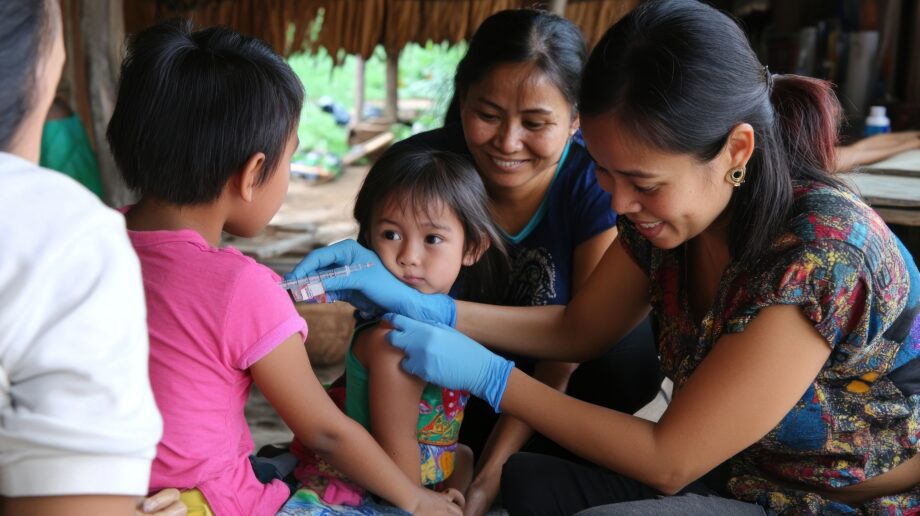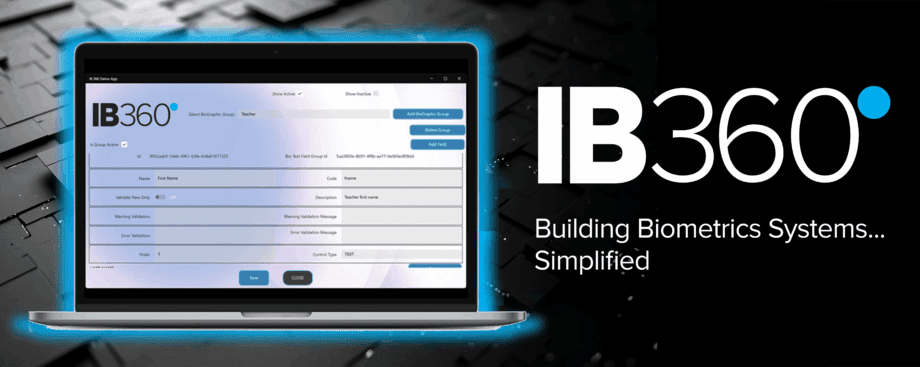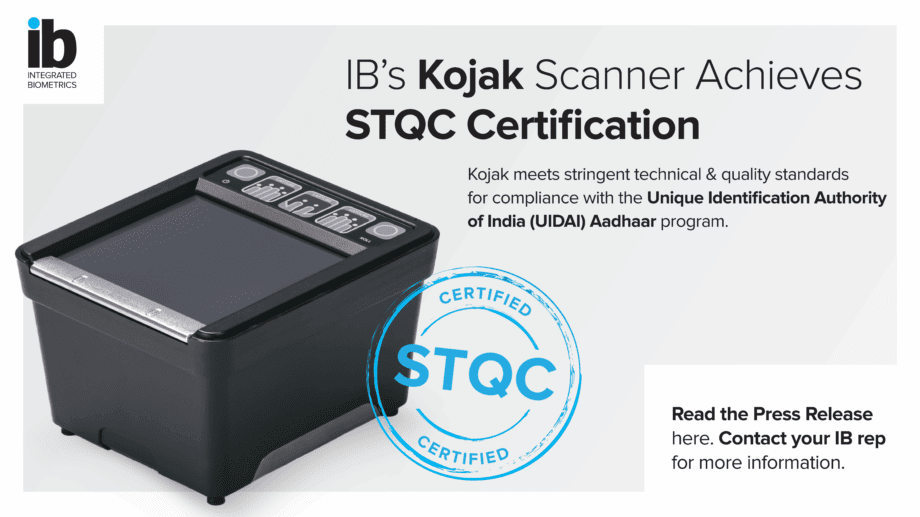Download the Article here.
As we close out World Immunization Week 2025, global health leaders are emphasizing the power of vaccines to save lives, prevent suffering, and strengthen communities. Immunization remains one of the most effective and affordable public health tools available, preventing millions of deaths each year. Yet, despite decades of progress, millions of children still miss essential vaccines, due largely to gaps in access and infrastructure.
One major barrier is tracking immunization for children without official identification. This issue affects nearly one in four children under five in low- and middle-income countries whose births are not registered. Without reliable identity systems, it is very challenging to monitor vaccine coverage and ensure timely follow-up doses. This leaves many children vulnerable to preventable diseases and undermines global health efforts.
The Power of Immunization
According to the World Health Organization, global immunization efforts have saved an estimated 154 million lives over the past 50 years, which is equivalent to 6 lives every minute. Of these, 101 million were infants. Vaccination against 14 diseases over the past 50 years has contributed to reducing infant deaths by 40% globally, and by more than 50% in Africa.
For each life saved through immunization, an additional 66 years of full health were gained Beyond saving lives, immunization represents one of the most cost-effective public health investments available. For every dollar invested in vaccination in the world’s 94 lowest-income countries, 16 times that amount is saved in healthcare costs, lost wages, and lost productivity.
The Global Identity Challenge and the Importance of Early Immunization
Immunizing children as early as possible is critical. Infants have weak immune systems and face the highest risk from many vaccine-preventable diseases. Early vaccination builds a strong foundation of protection, shielding children before they encounter deadly pathogens.
The challenge, however, lies in ensuring that every child not only receives their first vaccine but completes the entire recommended schedule. This challenge becomes harder when children don’t have official identification. Many vaccines require multiple doses – often spaced weeks or months apart. Missing even one can weaken protection. Reliable tracking systems are essential – especially for vaccines like DTP, which begin at six weeks of age and require boosters over time.
Today, 84% of infants worldwide receive three doses of the diphtheria-tetanus-pertussis (DTP3) vaccine, the global benchmark for immunization coverage. Despite this progress, around 67 million children missed out on vaccinations, and coverage levels have yet to recover to pre-pandemic highs.
Even more alarming are the 11 million “zero-dose children” – children who did not receive even a single DTP3 dose – in 57 countries supported by Gavi, the Vaccine Alliance, a global organization dedicated to increasing vaccine access in low-income nations.
Why Identity Matters: Voices from the Field
As Dr. Joseph Atick, founder of ID4Africa and a leading advocate for digital identity in development, explained in an interview with Integrated Biometrics, health workers in refugee settings often face impossible choices: “Without identification, they don’t know who the child is, and there’s no way to confirm which vaccines they’ve received.” Reliable identity systems are not just about better data – they’re essential to saving lives.
Digital Identity Solutions: A New Frontier
Digital identity solutions, particularly biometrics, offer a promising path forward. Biometrics – unique physical characteristics such as fingerprints or footprints – provide several advantages:
- Uniqueness: Biometric markers are inherently unique to each person.
- Permanence: Unlike paper records, biometric markers cannot be lost or forgotten.
- Portability: Biometric identification travels with the individual, enabling continuity of care.
- Accessibility: Biometric identification works regardless of literacy or documentation.
Until recently, biometric identification for infants was thought to be impossible. However, emerging research suggests we may be closer than previously thought, with many key studies confirming that the science of infant biometrics is advancing rapidly.
Real-World Applications: Proof in Action
In Bangladesh, a partnership between Gavi, Simprints, and the Bangladesh Ministry of Health has demonstrated the promise of infant biometrics. At 50 clinics, over 5,000 children have been enrolled with their fingerprints while receiving their first measles vaccines. When these children return for later doses, healthcare workers verify their identity with a fingerprint scan, confirming who they are and which vaccines they need.
In Ghana, another innovative project deploys contactless biometric ID in a nationwide immunization drive – the first such deployment in the world – supporting a continuum of care far beyond just vaccination.
DTP Vaccine and Digital ID: A Hypothetical Case Study
DTP coverage is often used by organizations like WHO and UNICEF as a key indicator of a country’s immunization system. The DTP vaccine – protecting against diphtheria, tetanus, and pertussis – requires multiple doses to establish immunity:
- First dose at 6 weeks
- Second dose at 10-14 weeks
- Third dose at 14-18 weeks
- Potential booster doses throughout life
This multi-dose schedule makes tracking critical. Imagine Amara, a newborn in a rural community without birth registration:
- Initial Registration: At birth, healthcare workers create a digital health record linked to infant identifiers like fingerprints or footprints.
- First Dose (~6 weeks): When Amara returns for her first DTP dose, the system verifies her identity and confirms she’s due for vaccination.
- Second Dose (~10 weeks): If Amara’s family relocates, healthcare workers at a new facility can still verify her identity and vaccination history.
- Third Dose (~14 weeks): As Amara grows, more reliable biometric markers like fingerprints become available, further improving identification accuracy.
- Follow-up: The system actively supports outreach by identifying missed doses, prioritizing high-risk children, and sending reminders to caregivers.
- Lifelong Protection: As Amara grows, the system ensures she receives booster doses at appropriate intervals, maintaining protection throughout life.
This example highlights the complexity of tracking immunizations – and the crucial role digital identity can play.
Looking Ahead: Combining the Power of Vaccines and Digital Identity
As World Immunization Week 2025 comes to a close, the path forward is clear: Reaching every child will take more than vaccines – it requires digital tools to make sure no one is left behind. By combining the power of immunization with the precision of digital identity, we can ensure that every child is protected.
Immunization for all is humanly possible – and it’s just a fingerprint away.
To learn more about biometrics for infants, connect with Integrated Biometrics.
References
https://data.unicef.org/topic/child-health/immunization/
https://www.gavi.org/vaccineswork/global-immunisation-2023-7-things-you-need-know
https://www.gavi.org/vaccineswork/how-do-we-track-vaccinations-people-who-dont-formally-exist
https://www.abpi.org.uk/value-and-access/vaccines/economic-and-societal-impacts-of-vaccines/
https://www.pnas.org/doi/10.1073/pnas.1704507114
About Integrated Biometrics
Integrated Biometrics (IB) is a global leader in advanced biometric technology. Renowned for revolutionizing fingerprint scanning through its proprietary, FBI-certified Light Emitting Sensor (LES) technology, the company delivers cutting-edge fingerprint scanners, seamless biometric system integration software, contactless fingerprint capture, and comprehensive identity management beginning with infant identification solutions.
Trusted by organizations worldwide, Integrated Biometrics serves critical sectors such as law enforcement, military, election validation, financial services, and national identity programs. Its robust, high-performance products enable fast and accurate enrollment, identification, and verification, even in remote and extreme environments. IB continues to redefine the possibilities of biometrics—Impacting Lives Through Identity.




